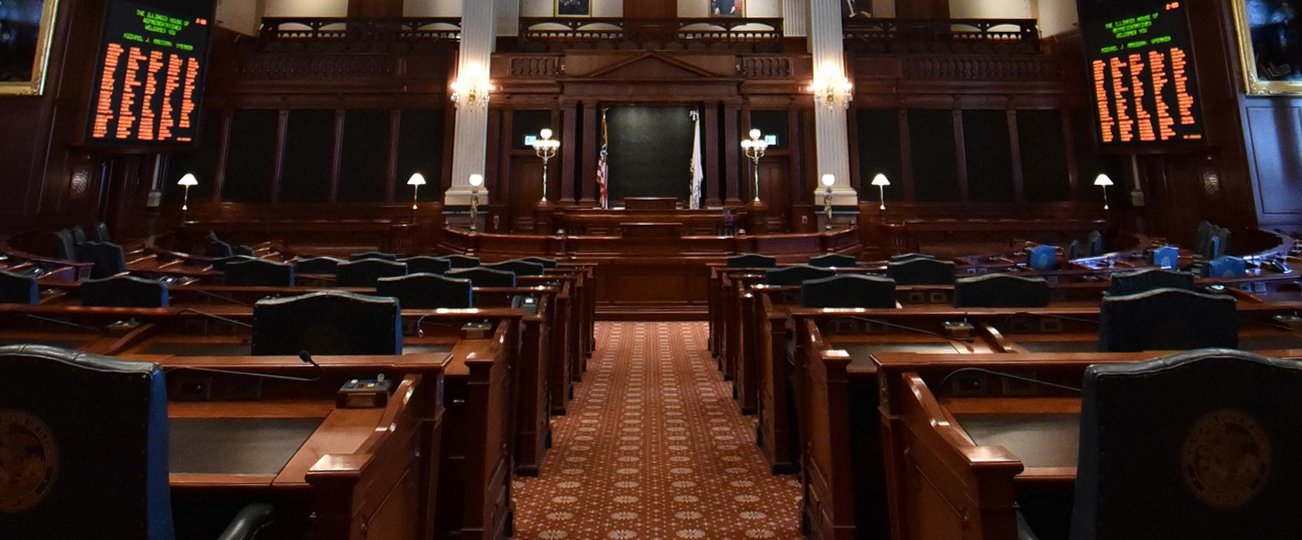The celebration marks not only the gathering of 56 Founders at Independence Hall, but also the progression of American history, from a small experiment in self-government, to the large and powerful democratic republic that we are today.
It marks the proud history of our great nation, and the shameful events we have overcome as well.
A document reflective of those contradictions is on display in Springfield this week as part of the America 250 celebration.
Eleven years after the Declaration of Independence, the Founders gathered again in Philadelphia to draft the structure of a new government to rule the United States.
The Constitution they produced was a blueprint for a lasting government and also a statement of the nation’s ideals and aspirations. It included a phrase right at the top which seemed to suggest that while the Founders sought to establish the best system of government they could, there would always be room for improvement: “…in order to form a more perfect Union.”
The Founders knew their design was not perfect – no human endeavor is – but they sought to come as close to perfection as they could, while creating a process for their successors to make improvements in the years and (hopefully) centuries to come.
One of these needed improvements could be found in the Constitution’s first three words.
The celebrated phrase “We the People,” recognized that the United States would be the world’s first self-governing nation, not reliant on the divine right of kings or the raw power of a dictator, but instead on the God-given rights of the people to elect their leaders.
But in 1787, and for nearly four score years thereafter, that phrase “We the People” did not include all the people.
By the time of the ratification of the Constitution, the institution of slavery was drawing its last breath in the north, while becoming more entrenched in the south. Every year it became more contentious and divisive.
A series of compromises from the 1820s to the 1850s kept the simmering divide from exploding, but did not resolve the great question of bondage versus freedom. Illinois Senator Stephen Douglas’ 1854 Kansas-Nebraska Act demonstrated to many the futility of further compromises.
Speaking in Springfield in 1858, Abraham Lincoln offered prophetic words about the future of such a division.
“A house divided against itself cannot stand. I believe this government cannot endure, permanently half slave and half free.”
Two years later, after Lincoln’s election to the Presidency, the divided house broke apart, and the Civil War began.
Leaders of the southern confederacy believed their best hope for victory lay in diplomatic recognition by the great powers of Europe. But those nations were reluctant to ally themselves with a confederacy built on enslavement.
Lincoln, nominated by the anti-slavery Republican party and elected by the votes of the northern, free states, reached a momentous decision in July 1862. He would strike a blow for freedom, and in the process end any hope of foreign recognition of the Confederacy.
He would free the slaves.
But when he called his Cabinet together to announce his decision, they balked.
The Union Army had met with defeat after defeat on the battlefield. Such a dramatic move at a moment of military weakness would appear not as an act of statesmanship, but of desperation. He must wait for a victory. Lincoln reluctantly put the idea on hold.
He did not have to wait long.
In September 1862, the Confederate Army attempted an invasion of the north, only to be turned back along Antietam Creek in Maryland. The battle was mostly a draw, but the Confederate invasion was repulsed and the soldiers in gray fell back to Virginia.
That was good enough for Lincoln.
Five days later, he announced a preliminary Emancipation Proclamation, to take effect on January 1, 1863.
“All persons held as slaves within any State or designated part of a State, the people whereof shall then be in rebellion against the United States, shall be then, thenceforward, and forever free.”
Instantly, the war was transformed into a clash over the very meaning of freedom itself. It was a dramatic step toward the “more perfect Union” the Founders envisioned.
When the designated date arrived, Lincoln spent the morning hosting a New Year’s reception. He shook hands with so many guests that when the time came to sign the most important document of his presidency, his hand quivered. He paused, commenting that he should steady his hand before applying the historic signature, lest some future observer detect a wavering and mistake it for a lack of resolve.
The Emancipation Proclamation freed millions of enslaved people. It opened the door for more than 200,000 Black soldiers and sailors to join the Union Army and Navy and the fight for freedom. It was a step forward, one of many on the ongoing journey toward “a more perfect Union.”
Word of emancipation spread quickly to some areas, slowly to others. In parts of the south it was kept quiet but could not be silenced forever. The arrival of Union troops in far-away parts of Texas on June 19, 1865, brought freedom to the last bastion of slavery in the United States.
Today, an original signed copy of the Emancipation Proclamation resides in the Abraham Lincoln Presidential Library and Museum (ALPLM) in Springfield. It is put on display for special occasions.
America 250 is one of those occasions.
The Emancipation Proclamation will be available for public viewing at the ALPLM through next Thursday, June 26. Find out more details here.
More events in celebration of America 250 are planned throughout the state this summer and over the next year. Get all the details of upcoming America 250 celebrations across Illinois at the America 250 Illinois website.


